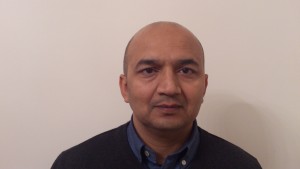Bigger cities don’t have to mean bigger risks
By Zubair Murshed
Friday, 30 January 2015
 The majority of the world’s population is urban, and it’s easy to understand why: Urban settings often offer better economic opportunities and better access to essential services (such as healthcare and education), as well as a wider variety of entertainment and leisure options.
The majority of the world’s population is urban, and it’s easy to understand why: Urban settings often offer better economic opportunities and better access to essential services (such as healthcare and education), as well as a wider variety of entertainment and leisure options.
But urban environments are also uniquely vulnerable to disasters. Many towns, cities, and urban sprawls stand in coastal zones, on riverbanks, or in mountains– settings that are exposed to geological and hydro-meteorological hazards like earthquakes, storm surges, and cyclones. In addition, rapid urbanization often brings poor land use planning, unsafe construction practices, and damage to natural resources (like waterways and mangroves).
Urban centers can suffer from ‘intensive risk,’ because a large number of people, facilities, services, and assets are condensed in one place and at risk of substantial losses and damages from a disaster.
As the world becomes more and more urbanized, urban risk reduction becomes more and more of a necessity. The post-2015 framework for disaster risk reduction, which will emerge at the upcoming UN World Conference on Disaster Risk Reduction in Sendai, Japan, can help elevate this concern at the highest levels and push for disaster risk reduction to be built into urban planning and development.
With UNDP support, Lebanon, Jordan and other countries in the Arab States have begun to show how disaster risk reduction and urban planning go hand-in-hand. While the region is highly vulnerable to droughts, flash floods, storms and coastal inundation, regional governments are aware of the boon of urbanization and have taken steps to ensure risk-informed, sustainable development.
For example, in the region UNDP has sponsored multiple initiatives to help increase resilience, including:
- support to carry out urban risk assessments, which have guided better, seismic-safe construction
- help to establish, train and equip city search and rescue teams in Amman and Aqaba, Jordan
- awareness and training events carried out as a part of the ‘Making Cities Resilient Campaign’ in Lebanon
- the Aqaba Declaration on DRR in Cities
In 2014, UNDP (in collaboration with the Swiss Development Cooperation and UNISDR) launched a regional project entitled, ‘Arab Cities Disaster Resilience Initiative,’ which supports local authorities in three cities to implement the targets of the Aqaba Declaration.
The Post 2015 Framework for DRR can encourage this type of risk-informed urbanization globally. From megacities like Lagos and Jakarta, to smaller but rapidly expanding cities, we need to accommodate more people and address the likelihood of more risk. This type of effort will take commitment and dedication across the board, not just from UNDP but all UN agencies, civil society, the private sector and, most importantly, governments.
Zubair Murshed is the Regional Disaster Risk Reduction Adviser at the UNDP Regional Centre for Arab States in Jordan.
 The majority of the world’s population is urban, and it’s easy to understand why: Urban settings often offer better economic opportunities and better access to essential services (such as healthcare and education), as well as a wider variety of entertainment and leisure options.
The majority of the world’s population is urban, and it’s easy to understand why: Urban settings often offer better economic opportunities and better access to essential services (such as healthcare and education), as well as a wider variety of entertainment and leisure options.